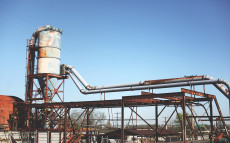- pathfindersAI
- Job Profile
Sewers, Hand
Summary
Sewers, Hand: A Detailed Job Description
What They Do
In a rapidly evolving world, where automation and mass production dominate industrial landscapes, the role of Sewers, Hand remains a testament to the enduring power of artisanal craftsmanship. Sewers, Hand, are skilled artisans who bring threads and fabrics to life through meticulous and dexterous needlework. They engage in manual sewing, mending, and altering garments, textiles, and other materials, ensuring that each piece is not only functional but also aesthetically pleasing. This profession combines patience, precision, and creativity, factors imperative for generating bespoke, high-quality textile products.
Job Responsibilities
The responsibilities of Sewers, Hand are as diverse as the textiles they work with. Key tasks include examining and interpreting sketches, patterns, and samples to determine the sewing requirements. They meticulously cut fabric, aligned according to specific measurements, and then sew sections together using needles and threads. Often, these artisans are involved in mending damaged clothing, ensuring seams are reinforced, and applying patches or decorative elements. Attention to detail is critical, as they must check for consistency in stitching and make necessary adjustments to maintain the integrity of the piece. Aside from these core duties, some Sewers, Hand may also engage in the design process, offering valuable insights into fabric selection and garment construction.
Essential Skills
The role of a Sewer, Hand demands a unique convergence of technical prowess and artistic flair. Manual dexterity and hand-eye coordination are indispensable, allowing artisans to execute intricate stitches with precision. An eye for detail ensures accuracy and consistency across all projects, while creativity fuels innovative design solutions and aesthetic enhancements. Patience and concentration are equally vital, as some sewing tasks can be time-consuming and repetitive. Interpersonal skills are also beneficial, particularly for those who interact directly with clients, translating their needs and preferences into tangible products. Moreover, basic mathematical skills are often required for measurements and pattern making.
Educational Pathways
While a high school diploma is typically the minimum educational requirement for Sewers, Hand, formal training can significantly enhance skillsets and career prospects. Many community colleges, technical schools, and state colleges like ours offer specialized programs in fashion design, textiles, and garment construction. These courses provide comprehensive training in various sewing techniques, pattern making, and fabric selection. Apprenticeships and on-the-job training are also prevalent pathways, allowing aspiring sewers to learn directly from experienced professionals. Additionally, continual learning through workshops and industry certifications can further bolster one’s expertise and adaptability to evolving trends and technologies.
Career Prospects
The career prospects for Sewers, Hand vary widely depending on location, experience, and specialization. While the demand for handcrafted clothing and customized garments remains niche, it is growing in niche markets, such as high-fashion boutiques, bespoke tailoring shops, and costume design for theatre and film. Many skilled sewers carve their paths as entrepreneurs, launching their own clothing lines or offering alteration services. According to the Bureau of Labor Statistics, the employment outlook for this profession is relatively stable, though automation and cost-effective offshore labor pose challenges. However, the increasing consumer appreciation for unique, high-quality, and ethically produced textiles creates a promising niche for skilled sewers.
Conclusion
In essence, the role of Sewers, Hand is one imbued with the rich tradition of craftsmanship and the nuanced skill of art. These artisans meticulously transform fabrics into finely tailored creations, each stitch embodying a blend of technical mastery and creative vision. With essential skills in manual dexterity, a keen eye for detail, and formal education in fashion design or textiles, Sewers, Hand can pursue varied and fulfilling career trajectories. As consumer values shift toward sustainable and unique products, the timeless craft of hand sewing holds an enduring appeal and a bright future for those dedicated to preserving its art.
Video
Compensation
| State | Median Salary | Median Hourly | Positions |
|---|---|---|---|
| AL | 27,430 | 13.19 | 80 |
| CA | 34,270 | 16.48 | 350 |
| CO | 35,860 | 17.24 | 50 |
| FL | 27,820 | 13.38 | 340 |
| GA | 40,470 | 19.46 | 160 |
| IL | 31,050 | 14.93 | 580 |
| IN | 34,160 | 16.42 | 70 |
| LA | 32,370 | 15.56 | 50 |
| ME | 29,470 | 14.17 | 60 |
| MA | 35,500 | 17.07 | 40 |
| MI | 33,980 | 16.34 | 40 |
| MS | 20,560 | 9.88 | 60 |
| NJ | 46,090 | 22.16 | 30 |
| NY | 34,560 | 16.62 | 310 |
| NC | 30,370 | 14.60 | 70 |
| OH | 34,890 | 16.77 | 150 |
Similar Occupations
In this area you will find other occupations that are close to the one you were viewing in tasks, knowledge and work environment. If the primary job profile you are viewing isn't quite to your liking, take a look around and see what else is available.
Basic and Premium Accounts have more alternative occupations available than the Free account.

Cutters and Trimmers, Hand - 51-9031.00
A Cutters and Trimmers, Hand worker uses handheld tools to cut, trim, or shape various materials such as textiles, food, and wood according to specifications. They ensure precision and accuracy in the process to meet quality standards and design requirements.
-
$37,040/yr
Median Pay -
7,220
Number of Jobs

Fabric and Apparel Patternmakers - 51-6092.00
Fabric and Apparel Patternmakers create templates for the construction of clothing and other textile products, ensuring precise measurements, shapes, and styles align with design specifications. They transform designers' concepts into detailed pattern pieces that guide the cutting and assembly process in garment manufacturing.
-
$62,510/yr
Median Pay -
2,670
Number of Jobs